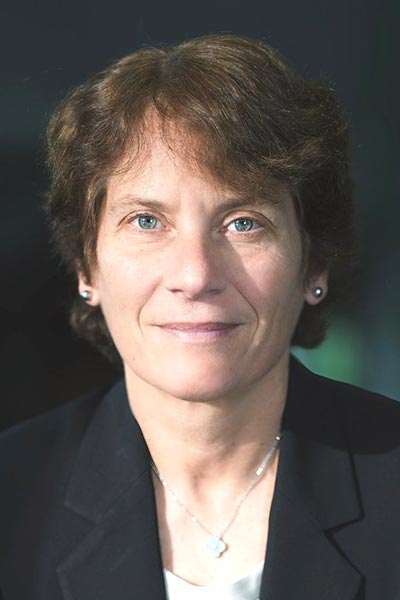Nobel Laureate will discuss her work investigating the glycobiology of cancer
Carolyn R. Bertozzi, PhD, shared the Nobel Prize in Chemistry in 2022 for her invention of bioorthogonal chemistry, which is a class of chemical reactions that are compatible with living systems. These chemistries allow researchers to explore molecular imaging and drug targeting without interfering with natural biological processes.

Bertozzi’s AACR Award for Outstanding Achievement in Chemistry in Cancer Research, and her lecture, focus on the glycobiology of cancer.
“There is a family of receptors on immune cells that bind carbohydrates,” said Bertozzi, Baker Family Director of the Sarafan ChEM-H Institute and Anne T. and Robert M. Bass Professor of Chemistry at Stanford University. “Called the ‘sialic acid-binding immunoglobulin-like lectins’ — abbreviated Siglecs — these receptors bind carbohydrates that possess the sugar sialic acid. There are 14 Siglec family members in humans and they are found in various combinations on every type of immune cell — T cells, macrophages, neutrophils, NK cells, all of the immune cell types that are important in anti-cancer immunity. As tumors progress, they often overexpress sialoglycan ligands for Siglecs, which allows them to engage these receptors and suppress immune-cell reactivity. We have focused on developing immune therapies that disrupt Siglec-ligand interactions.”
Bertozzi will discuss this area of her research during her award lecture, Targeting the Glycocalyx for Cancer Immune Therapy, at 4:30 p.m. ET Sunday in Tangerine Ballroom 3-4 (WF3-4) at the convention center.
“The signaling biochemistry of the Siglec family of checkpoint receptors is similar to the signaling biochemistry that PD-1 participates in,” Bertozzi explained. “They are like PD-1 except that they bind sugars rather than proteins, and they are present on every type of immune cell, including activated T cells, but also myeloid-derived cell types.”
Many cancer researchers are unaware of glycoscience, Bertozzi said. Many were not exposed to the fundamental concepts of glycobiology during their training and remain unaware that so much of immunology, particularly in cancer, involves carbohydrate-receptor interactions.
“Glycobiology is an important area to become more familiar with if you want to truly be able to move the needle,” she said. “The science we have uncovered has led to the identification of exciting new targets, which has enabled us to invent new therapeutic modalities.”
Familiar small molecules and antibodies are of marginal use in targeting sugars, Bertozzi explained. Because carbohydrates are different types of molecules than traditional cancer targets, they need nontraditional mechanisms of action.
A new class of targeted enzymes can edit the cell surface glycocalyx (or sugar coating) and deprive cancers of their ability to engage Siglec receptors. Without the broad inhibitory activity of Siglecs, the immune system remains free to engage and, hopefully, destroy tumors. At least one investigative agent is in phase I human trials and is poised to move into phase II.
“Glycobiology might explain why so many patients don’t respond to anti-PD-1 and anti-PD-L1 antibodies,” Bertozzi said. “We think a large fraction of tumors suppress the immune response through Siglec engagement.”
More from the AACR Annual Meeting 2025
View a photo gallery of scenes from Chicago, continue the conversation on social media using the hashtag #AACR25, and read more coverage in AACR Annual Meeting News.

